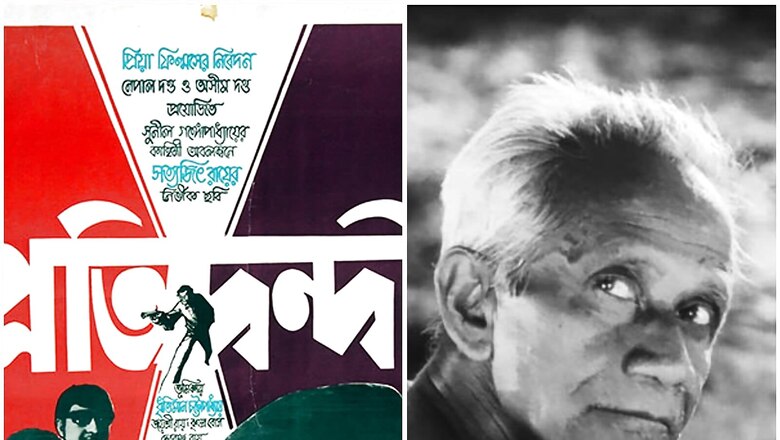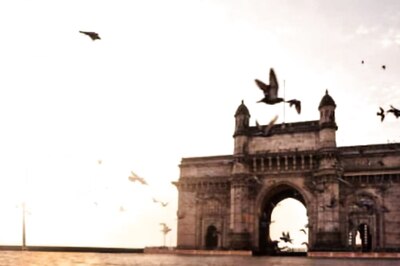
views
Satyajit Ray’s Pratidwandi and Aravindan’s Thamp will be part of the Classics section at the Cannes Film Festival, set to run from May 17 to 28. The movies here are those that have been digitally restored.
Pratidwandi (The Adversary) in Bengali will be presented by the National Film Development Corporation of India and has been restored under the National Film Heritage Mission, a project of the Union Ministry of Information and Broadcasting.
It may be recalled that Cannes holds a special place for Ray, whose debut work, Pather Panchali /Song of the Little Road, clinched a prize there in 1956 – an honour which opened up international vistas for the auteur and Indian cinema. In fact, an unsung and unheard of Ray suddenly hit the limelight after this even at home in Calcutta.
Pratidwandi – which was released in 1970 as the first part of the Calcutta trilogy, (the other two are Seemabaddha, 1971, and Jana Aranya, 1975) — has a fascinating and deeply provocative plot based on a novel by Sunil Gangopadhyay. Siddhartha (played with a touch of brilliance by Dhritiman Chatterjee) is an educated middle-class youth who finds himself in a dilemma. In a scenario of corruption and unemployment, he cannot align himself with his activist brother and his revolutionary ideas or his career-minded sister.
That year, Bengal was in turmoil with a call by Charu Mazumdar and his band of Naxalites who wanted to change the society. But their methods were violent, and their party, Communist Party of India (Marxist-Leninist), believed in annihilating class enemies. Their first target were the policemen on the streets and police informers. But Mazumdar and his men were put down ruthlessly by the then regime. Ray believed that a change was necessary, but the means to that was not violence. He conveyed this with power and punch through the characterisation of Siddhartha.
Ray brings out with lucidity Siddhartha’s dilemma, moulding him into an improved version of what he is seen in the novel. In fact, it is often said Siddhartha was much closer to the maestro than Apu. Pratidwandi is by far Ray’s most powerful work that minutely examines society’s underbelly and all that it hides. It is full of contrasts, and they unforgettable.
G. Aravindan’s Thampu (1978) – renamed as Thamp now – has also been restored under the Film Heritage Mission. His second work after Kummatty (1979) to have been treated, Thamp explores a travelling circus.
Shot in black and white by Shaji N. Karun (who has since then become a director of considerable merit), the film offers a wonderful kaleidoscope of life in a small circus with master actors like Bharath Gopi and Nedumudi Venu. In fact, the cast also included real circus workers, and Aravindan captured many scenes during actual performances and rehearsals – elaborating how these men enraptured simple village folk.
Aravindan’s son Ramu said in a media statement: “Aravindan’s movies were seen and discussed widely in the mid-1970s to the mid-1990s as carriers of a unique but very specific kind of visual-poetic sensibility. That reputation endured even as a younger generation of viewers and filmmakers grew up. His reflective kind of cinema continued to be discussed. Only this time, it was mostly by word of mouth – good digitisations of these movies were hardly available. Quite ironic for a very visual filmmaker! ”
I still remember a remarkable scene in which Aravindan captures the many moods of many, many faces – all photographed in delightful closeups. In fact, he had no script, but managed to examine the transient nature of human relationships and the kind of ripples the arrival of a circus troupe caused among the marginalised sections of the population.
Aravindan gathered a bunch of circus artists, took them to the village of Thirunavaya on the banks of the Bharathapuzha River. When the tent was set up, it amazed the simple villagers, many of whom had never seen a circus before. For a few days, the performances are the centre of attraction, but after that the people move away to prepare for a local festival.
Aravindan’s work is celebrated for its reflective silences and are known to be extraordinarily observational. His closeups in Thamp are as captivating as some of those we have seen in European cinema, especially in the work of the Swedish director, Ingmar Bergman.
Read all the Latest Movies News here



















Comments
0 comment